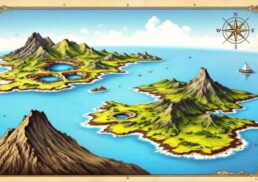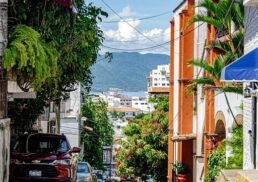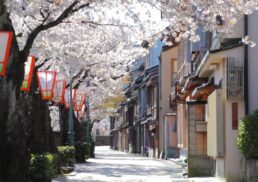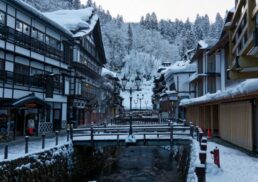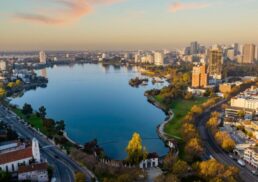The Pacific Ocean, encompassing more than 165 million square kilometers, is the largest and deepest of the world’s oceanic divisions. This vast marine expanse touches upon numerous countries’ borders and holds profound secrets in its abyssal depths, including the Mariana Trench with its Challenger Deep, the deepest point known on Earth. But what makes the Pacific so vital to our planet, beyond its size? In this comprehensive guide, we’ll dive into its staggering biodiversity, pivotal role in global climate, and the ongoing human activities that both benefit from and impact this oceanic giant, revealing why the preservation of the Pacific is critical to the future of our blue planet.
Table of Contents
Key Takeaways
The Pacific Ocean is the largest ocean basin, covering more than 30 percent of the Earth’s surface with an average depth of around 4,000 meters, and contains the deepest known point on the planet, the Challenger Deep in the Mariana Trench.
Dynamic water movements in the Pacific, including currents and tides, play a vital role in distributing nutrients, supporting marine life, and influencing global weather patterns and climate systems such as El Niño and La Niña.
Human activities such as exploration, exploitation, and pollution impact the Pacific, leading to challenges like overfishing and habitat destruction, while conservation efforts focus on establishing MPAs and combating pollution to ensure the ocean’s sustainability.
The Vastness of the Pacific: Size, Depth, and Geography

Spanning a staggering 165.2 million square kilometers, the Pacific Ocean holds the title of the largest ocean basin on our planet. This immense body of water, accounting for more than 30 percent of the Earth’s surface, is so vast that it could comfortably fit the entirety of the United States fifteen times over. Its sheer size eclipses even that of the Atlantic Ocean, making the Pacific the most expansive stretch of water on the globe. With an average depth of around 4,000 meters, the Pacific not only covers a vast area but also plunges into profound depths, holding more than half of the world’s oceanic water. The geography of the Pacific is marked by a complex tapestry of deep trenches and towering ridges, particularly pronounced in the western and northern regions, which add to the ocean’s dramatic topography.
The Pacific Ocean’s boundaries span from the frigid waters of the Bering Sea in the north to the icy embrace of the Southern Ocean in the south, encompassing a world of contrast and diversity within its expanse. The North Pacific Ocean, in particular, serves as a bridge between the eastern and western hemispheres, hemmed in by the vast continents of Asia and Australia on the western front and by South America and the rest of the Americas on the eastern coastline. The Pacific’s western regions, including the Western Pacific, are characterized by a jagged line of oceanic trenches, forming a stark contrast to the relatively smoother contours of the eastern boundary where the Pacific Ocean lies. This immense ocean is not just a body of water but a dynamic and complex system that shapes and is shaped by the geography it encounters, forming the Pacific Basin. Within this vast expanse, the southern and eastern Pacific regions also play a crucial role in shaping the ocean’s dynamics.
The Deepest Points
The Pacific Ocean is renowned for its depths, boasting the deepest ocean basin on Earth. Nestled within this abyss is the Mariana Trench, a crescent-shaped scar in the ocean floor that plunges deeper than Mount Everest is tall. The Challenger Deep, residing within the bounds of the Mariana Trench, marks the planet’s deepest known point, a place shrouded in darkness and mystery. The pressures here are a thousand times greater than at sea level, and the environment is as alien as any extraterrestrial landscape. Alongside the Challenger Deep, the Sirena Deep also resides within the Mariana Trench, ranking as the third deepest point on Earth and further emphasizing the trench’s significance in the topography of the ocean floor.
These depths are not merely points on a map but gateways to unexplored realms that challenge our understanding of life and the limits of survival. The Mariana Trench, along with other deep ocean trenches and mid-ocean ridges that crisscross the Pacific seafloor, holds the keys to unlocking the mysteries of deep-sea ecosystems and the geologic forces that shape our world. The potential for deep sea mining in these areas, while fraught with environmental concerns, speaks to the untapped resources lying in the ocean’s depths, waiting to be discovered.
The deep abyss of the Pacific serves as a constant reminder of how much remains unknown and uncharted beneath the waves.
Geographic Extent
Stretching across millions of square miles, the Pacific Ocean’s geographic extent defines a substantial portion of the Earth’s surface. From the chilly currents of the Bering Sea to the swirling waters of the Southern Ocean, the Pacific’s reach is both vast and varied. It is a global ocean that serves as the aquatic backdrop to the diverse landscapes of Asia, Australia, and the Western Hemisphere, influencing the climates and cultures of these regions. The Pacific Ocean’s eastern boundary is marked by the convergence of several tectonic plates, creating a complex network of ocean trenches that are the sites of frequent geologic activity. This oceanic expanse is not a static entity but a dynamic and ever-changing environment that continues to evolve and shape the world around it.
The vastness of the Pacific also encompasses a plethora of islands, archipelagos, and atolls, each with its own unique ecosystems and cultural heritage. These island groups are scattered like jewels across the ocean’s surface, from the tropical paradises of the South Pacific to the rugged, volcanic landscapes of the northwestern Pacific. They are the homes of indigenous communities, the destinations of intrepid explorers, and the subjects of countless myths and legends. The geographic extent of the Pacific is a testament to the ocean’s role as a connector of continents, a nurturer of biodiversity, and a canvas for human history.
Dynamic Water Movements: Currents and Tides

The waters of the Pacific Ocean are anything but static; they are defined by a complex dance of currents and tides that circulate life-giving nutrients and shape the ecosystems within. These dynamic water movements, moving clockwise in the Northern Hemisphere and counterclockwise in the Southern Hemisphere, create patterns that have fascinated mariners and scientists alike. The currents play an essential role in distributing nutrients across vast distances, sustaining vibrant marine life from the smallest plankton to the largest whales. Moreover, these movements facilitate key biological processes, such as migration and feeding patterns, which are crucial for the survival and reproduction of various marine species. The temperature disparities between the North Pacific and the South Pacific, influenced by the land to sea ratio and the chilling presence of Antarctica and the Southern Ocean, further add to the ocean’s dynamic character.
The impact of the Pacific’s currents reaches beyond the ocean itself, as they interplay with atmospheric conditions to affect weather patterns across the globe. The peaceful sea surface, often belied by the powerful forces at play beneath, is the stage for tropical cyclones and trade winds that can alter the course of history. The tides, with their rhythmic rise and fall, remind us of the enduring cycles that govern not just the ocean but all life on Earth. The dynamic water movements of the Pacific are a testament to the ocean’s role as a global force, shaping the environment and the creatures that call it home.
Surface Currents and Gyres
At the heart of the Pacific’s water movements lies the North Pacific Gyre, a vast whirlpool of currents that dominates the ocean’s circulation. This gyre, composed of the following currents, forms a colossal conveyor belt that distributes heat and nutrients across the ocean basin:
Kuroshio Current
North Pacific Current
California Current
North Equatorial Current
The influence of the North Pacific Gyre is profound, affecting not just the marine life within its embrace but also the climates of adjacent landmasses. The gyre’s movements are driven by a combination of the earth’s rotation, wind patterns, and the distribution of land and water masses, resulting in a dynamic system that is both a product and a driver of global weather patterns.
Surface currents, influenced by the trade winds and westerly winds, are the arteries through which the Pacific breathes, carrying the lifeblood of the ocean across thousands of miles. These currents shape the climates of the northern and southern hemispheres, with the warm trade winds bringing moisture and warmth, while the colder westerlies drive currents that can chill the air.
The Southern Ocean, with its powerful circumpolar currents, feeds into the gyres of the Pacific, connecting the water movements of this ocean with those of the global ocean system. It is within these currents and gyres that the true dynamism of the Pacific is revealed, a constant reminder of the ocean’s power and influence.
Deepwater Phenomena
Beyond the sunlit surface of the Pacific lies a realm where light fades and pressures soar: the deep waters of the continental slope. This zone is marked by temperatures that plummet and a darkness that is nearly absolute, creating an environment of extreme conditions where only the most resilient of creatures can thrive. Here, in the depths that contain 80% of the Pacific’s volume, life exists in a state of perpetual cold, a testament to the adaptability and tenacity of marine species. The circulation of these deep waters is influenced by the frigid currents generated around Antarctica, which sink and spread northward, contributing to the ocean’s overall circulatory system. At zones of convergence, where warmer surface waters meet the colder deep waters, vertical circulation occurs, playing a crucial role in the distribution of nutrients and the maintenance of marine ecosystems.
The phenomena that occur in the Pacific’s deep waters are not isolated events but are interconnected with the ocean’s overall health and stability. The ocean floor, far from being a static environment, is a landscape in motion, where underwater mountains and ridges rise and fall, and deep ocean trenches harbor secrets yet to be unveiled. The challenges of deep sea mining and the threat of ocean acidification loom over these depths, prompting a call for careful stewardship and a deeper understanding of the processes that govern this hidden world. As the Pacific continues to reveal its deepwater mysteries, we are reminded of the importance of preserving these enigmatic ecosystems for future generations to explore and learn from.
Life in the Pacific: Biodiversity Hotspots and Ecosystems
The Pacific Ocean is not merely a vast body of water; it is a living, breathing entity teeming with life in all its wondrous forms. From the tiniest phytoplankton to the majestic blue whale, the ocean’s biodiversity is a treasure trove that supports the global food chain and countless marine species. The islands of the Pacific, including iconic names such as the Hawaiian Islands, Marianas Islands, and American Samoa, are biodiversity hotspots that boast an array of marine lifeforms and demonstrate remarkable levels of biodiversity.
These ecosystems, shaped by the ocean’s currents and the islands’ volcanic origins, exhibit high levels of endemism, adding to the Earth’s global biodiversity and spotlighting their ecological importance. Moreover, the Pacific is home to a host of endangered marine species such as:
dugongs
sea lions
sea otters
seals
turtles
whales
This highlights the ocean’s pivotal role in marine conservation.
However, the vibrant life in the Pacific faces significant challenges due to human activities. Coastal development, habitat destruction, and overfishing have taken a toll on these natural habitats, threatening the vitality of ecosystems that have existed for millennia. The delicate balance of life within the Pacific’s waters is a reminder of our responsibility to protect and preserve these ecosystems for the countless species that depend on them, as well as for our own sake. The Pacific Ocean’s life is a complex web of interactions and dependencies, a symphony of biodiversity that must be safeguarded to ensure the health of our planet.
Coral Reefs and Atolls
The coral reefs of the Pacific are vibrant underwater cities, teeming with life and color. These rich ecosystems host thousands of species, including fish, invertebrates, and marine mammals, making them among the most diverse habitats on Earth. The Hawaiian archipelago stands out for its high rate of endemism, with coral reefs that are not only crucial for the structure of local marine communities but also significant for cultural ecosystem services and the marine tourism industry. Coral reefs are more than just beautiful attractions; they provide essential services such as coastal protection, sources of food, and livelihoods for millions of people around the Pacific Rim. The Eastern Tropical Pacific Seascape, which encompasses the Galapagos Islands, is another region recognized for its biodiversity and has become a focal point for conservation efforts, highlighting the global importance of these delicate marine environments.
The formation of coral reefs is a fascinating process, with colonial invertebrates building intricate structures over millennia in warm tropical regions. Their symbiotic relationships with algae are essential for their survival and contribute to their striking colors. Yet, these ecosystems are under threat from climate change, ocean acidification, and human activities, making their preservation a critical concern. Initiatives like the expansion of marine protected areas and conservation trust funds represent a beacon of hope for the future of Pacific coral reefs.
As custodians of the ocean, it is our duty to ensure that the Solomon Islands, these low coral islands and their vibrant ecosystems, continue to thrive for generations to come.
Island Wildlife
The Pacific islands are not just specks on a map; they are sanctuaries for a myriad of unique and often endangered species that are not found elsewhere on the planet. The rich tapestry of island wildlife includes the striking Fiji banded iguana, the formidable coconut crab, and various species of sea turtles, each adapted to their specific island habitats. The avian life of the Pacific is equally diverse, with bird species like the albatross, frigatebird, and the red-tailed tropicbird gracing the skies above these island paradises. These distinctive species, including the endangered birds, underscore the conservation importance and the urgent need to protect the unique biodiversity of the Pacific islands.
The isolation and diverse landscapes of the Pacific islands have given rise to ecosystems that are both fragile and resilient. The volcanic islands, with their rich soils and unique flora and fauna, are living laboratories for the study of evolution and natural selection. However, the introduction of invasive species, habitat loss, and climate change are threats that loom large over these delicate ecosystems.
The survival of the Pacific’s island wildlife is a testament to the adaptability of life in the face of adversity, and it is a reminder of our role in preserving these natural wonders for the wonderment and education of all.
Climate Patterns and Atmospheric Influence
The Pacific Ocean is a major player in the Earth’s climate system, its vast expanse acting as a colossal engine that drives weather patterns across the globe. The predominant wind patterns over this great ocean, the trade winds and the westerly winds, are powerful forces that influence global climate and weather phenomena. The Pacific is also the breeding ground for tropical cyclones, which are most frequent in southeast and east Asia from July to October and can form south of Mexico and strike Central America and Mexico primarily from June to October, with the peak months being August and September. The impact of these weather events can be profound, affecting not only the marine life within the Pacific but also the lives and livelihoods of people across many continents.
The climate patterns of the Pacific Ocean are complex and multifaceted, involving interactions between the ocean’s currents, the atmosphere, and the landmasses that border it. These interactions can lead to dramatic climatic events, such as El Niño and La Niña, which can have far-reaching effects on weather patterns, agriculture, and water resources. The sheer scale of the Pacific means that its influence on the climate is felt far beyond its shores, shaping the environmental conditions that support life across the planet. As we continue to study and understand the climatic role of the Pacific, we gain insight into the delicate balance that sustains the Earth’s climate and the importance of protecting this vital oceanic ecosystem.
Weather Shapers
The currents and winds of the Pacific Ocean are not mere movements of water and air; they are the architects of weather across the hemisphere. In the Northern Hemisphere, these elements move in a clockwise fashion, while in the Southern Hemisphere, they follow a counterclockwise path, together shaping weather patterns on a global scale.
The Pacific Ocean’s currents and winds include:
Trade winds, laden with moisture from the warm sea surface, bring rainfall and warmth to many regions
Westerlies, with their colder currents, influence the climates they encounter with cooler weather
High-pressure cells in the Eastern Pacific play a significant role in the weather of nearby landmasses, steering storms and influencing precipitation patterns
Additionally, during El Niño Southern Oscillation (ENSO) events, the southwestern United States often experiences unusually heavy precipitation, with impacts that ripple through the region’s ecosystems and water resources.
The Pacific also plays a role in the formation of hurricanes and typhoons, with the former typically affecting the western Mexican coast and occasionally the Southwestern United States, and the latter impacting the southeast and east Asian regions. These storms are part of the peak of global tropical cyclone activity that occurs in late summer and can have devastating consequences for coastal communities and ecosystems. The weather patterns set in motion by the Pacific’s currents and winds are not confined by the ocean’s boundaries; they reach across continents, reminding us of our interconnectedness with the natural world. It is through understanding the role of the Pacific as a weather shaper that we can better prepare for and respond to the climatic challenges that lie ahead.
El Niño and La Niña
The El Niño Southern Oscillation (ENSO) stands as one of the most powerful forces in the Pacific’s atmospheric arsenal, characterized by anomalous fluctuations in sea level barometric pressures and sea surface temperatures. These phenomena, El Niño and La Niña, significantly impact weather conditions not just in the tropical and subtropical Pacific regions but across the entire Western Hemisphere. During El Niño, warmer ocean temperatures can lead to increased rainfall and even flooding in some areas, while La Niña tends to bring drier conditions. The effects of these events are far-reaching, influencing weather patterns from the Americas to Africa, and from Asia to Australia.
The ENSO cycle is a natural part of the Earth’s climate system, yet its impacts can be intensified by the effects of climate change. The interplay between the north equatorial current and the trade winds is a key factor in the development of these events, with implications for fisheries, agriculture, and water resources on a global scale. As the Pacific continues to be a laboratory for studying climate dynamics, the insights gained from ENSO events underscore the importance of international cooperation in weather forecasting, disaster preparedness, and climate change mitigation.
By understanding the rhythms of El Niño and La Niña, we can better anticipate and respond to the challenges posed by these powerful climatic phenomena.
Human Impact: Exploration and Exploitation
The Pacific Ocean has long been a theater of human activity, from the daring voyages of ancient Polynesian navigators to the grand expeditions of European explorers. These early seafarers wielded traditional navigational methods, charting courses by the stars and the sea long before the Western world turned its gaze towards this vast ocean. The Pacific has served as a canvas for human ambition, a source of sustenance, and a path to new frontiers, but it has also borne witness to the impacts of human exploitation. The history of the Pacific is intertwined with the stories of those who have traversed its waters, seeking new lands, resources, and knowledge.
In the modern era, the Pacific Ocean continues to face challenges related to human activities. Overfishing, habitat destruction, and pollution are among the most pressing issues, threatening the health and diversity of marine ecosystems. The consequences of these activities are not limited to the ocean itself but extend to the economic and social fabric of the communities that depend on its resources. The Pacific’s role in the economic growth and trade for the Asia-Pacific Economic Cooperation (APEC) economies, particularly through fisheries and aquaculture, underscores its importance as a lifeline for millions of people.
As we navigate the complex relationship between exploration, exploitation, and conservation, the Pacific Ocean remains a vital component of our shared human heritage, calling for responsible stewardship and sustainable practices.
Historical Voyages
The allure of the Pacific Ocean has captivated explorers throughout history, leading to epic voyages that expanded our knowledge of the world. The ocean was named by Portuguese explorer Ferdinand Magellan in 1521, who, during his circumnavigation of the Earth, found its waters remarkably calm and dubbed it “Mar Pacifico,” meaning peaceful sea. The early encounters with the Pacific by Europeans, including figures like Vasco Núñez de Balboa and Magellan himself, laid the groundwork for centuries of exploration and discovery. Spanish explorers such as Álvaro de Mendaña de Neira and Pedro Fernández de Quirós played significant roles in furthering the exploration of the Pacific during the 16th and 17th centuries, charting new territories and expanding the boundaries of the known world.
As the Age of Exploration progressed, the Pacific became a stage for adventurers and scientists alike. Some notable explorers and their contributions include:
Dutch explorer Abel Janszoon Tasman
William Dampier
Louis-Antoine de Bougainville
Captain James Cook
The voyages of Captain James Cook in the 18th century were particularly influential, as they not only mapped numerous islands but also refuted the existence of a supposed southern continent, thus reshaping the geographical understanding of the time. These historical voyages, driven by a mixture of curiosity, ambition, and the quest for new trade routes, left indelible marks on the Pacific, shaping the course of its history and leaving a legacy that continues to inspire explorers today.
Modern Challenges
The legacy of exploration in the Pacific Ocean is paralleled by the modern challenges of exploitation and environmental impact. Some of these challenges include:
Overfishing, which has led to depleted fish populations and closed fisheries, such as those in the Okhotsk Sea, with significant economic and ecological ramifications.
The decision by the Japanese Cabinet in 2021 to discharge radioactive water into the Pacific, raising concerns about the exacerbating issue of ocean acidification and its effects on marine life.
Broader issues such as climate change, habitat destruction, and pollution that are threatening the health of the Pacific and its inhabitants.
These challenges are not isolated incidents but rather symptomatic of the broader issues facing the Pacific Ocean, including the east pacific rise.
The Pacific Ocean’s critical role in the economic growth and trade of the APEC economies underscores the need for a balanced approach to utilization and conservation. Fisheries and aquaculture are vital components of the region’s economy, but they must be managed sustainably to ensure the long-term health of marine ecosystems and the communities that rely on them. Human-induced drivers, including overexploitation and pollution, are leading threats to the diversity and vitality of the Pacific, highlighting the urgent need for collective action and responsible stewardship.
As we confront these modern challenges, the Pacific Ocean serves as a reminder of the delicate balance between human progress and the natural world.
The Ring of Fire: Volcanoes and Earthquakes
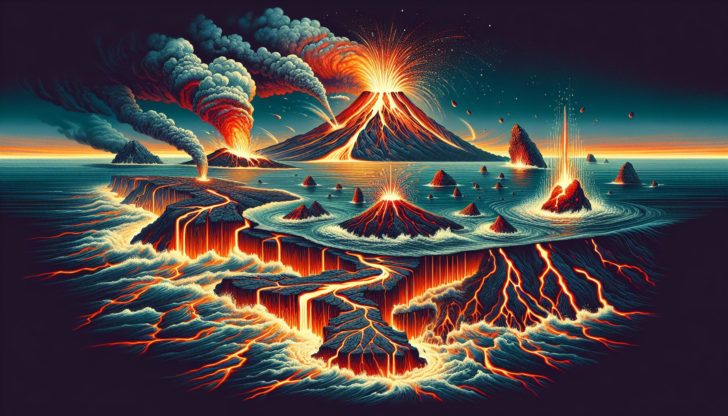
The Pacific Ocean is encircled by the “Ring of Fire,” a zone of high geologic activity that is both a creator and destroyer, home to 90% of the world’s earthquakes and 75% of its active and dormant volcanoes. This fiery ring is a testament to the powerful forces at work beneath the Earth’s crust, where the movement of tectonic plates shapes the landscape and triggers seismic events. The Ring of Fire is a crucible of creation, where new land is born from volcanic eruptions, and a reminder of the planet’s ever-changing nature. The frequent earthquakes within this zone are a result of the dynamic interactions between the Pacific Plate and other major tectonic plates, leading to the formation of deep ocean trenches, island arcs, and volcanic mountain ranges.
The geological activity within the Ring of Fire is not confined to remote regions but has direct implications for the millions of people living along the Pacific Rim. Earthquakes and volcanic eruptions can have devastating effects on populations, infrastructure, and economies, highlighting the importance of geophysical research and disaster preparedness. The study of seismic activity, volcanology, and related fields provides critical insights into the workings of our planet and helps to mitigate the risks associated with living in such a dynamic region. As we continue to explore and understand the Ring of Fire, we are reminded of the fragile balance between the Earth’s geologic processes and the safety and well-being of human societies.
Seismic Activity
The seismic activity that characterizes the Pacific Ring of Fire is a result of the relentless movement and interaction of the Earth’s tectonic plates. Subduction zones, where one plate is forced beneath another, are hotbeds for earthquakes, creating tremors that can be felt across vast distances. Transform boundaries, such as the one between the Pacific and North American Plates, are also prolific sources of seismic events, as the plates grind past each and other and release tension built up in the Earth’s crust. These seismic occurrences are not only fascinating from a scientific standpoint but also serve as potent reminders of the power that lies beneath our feet.
The potential for tsunamis, triggered by underwater earthquakes, poses a significant risk to coastal areas, with their capacity for widespread destruction. The Pacific, with its vast expanse and deep ocean trenches, is a theater for these dramatic events, which can occur with little warning and have lasting impacts on the landscapes and communities they affect. The study of seismic activity in the Pacific is crucial for early warning systems and preparedness measures that can save lives and minimize damage when these natural disasters strike. As we delve deeper into the complexities of the Pacific’s geology, our understanding of seismic activity continues to grow, enabling us to better anticipate and respond to the challenges it presents.
Volcanic Islands
Volcanic islands dot the Pacific Ocean like embers from the Earth’s fiery core, each formed by the eruption of volcanoes on the ocean floor. These eruptions build up layers of lava that, over time, break the water’s surface to create new land. The formation of new islands, such as the one that began as a separate islet near Nishinoshima and eventually merged with the existing landmass, is a dramatic demonstration of the Earth’s creative power. The volcanic islands of the Pacific are more than just geological curiosities; they support diverse ecosystems that include marine, land, and avian habitats, all of which are interconnected and vital for regional biodiversity.
The Ring of Fire is not only a zone of destruction but also one of creation, where the constant interplay of volcanic activity gives rise to new landscapes and opportunities for life to flourish. These volcanic islands, with their rich soils and unique ecological niches, are living laboratories for the study of evolution and biodiversity. However, the same forces that create these islands can also pose threats, as active volcanoes continue to shape and reshape the Pacific landscape. The study of these volcanic islands offers valuable insights into the processes that have shaped the Earth over millions of years and continue to influence its future.
Conservation Efforts: Protecting the Pacific’s Future
The Pacific Ocean’s vast expanse and rich biodiversity are under threat from a range of environmental challenges, from climate change to pollution. In response, a variety of conservation efforts have been initiated to protect its fragile ecosystems and ensure a sustainable future. Some of these efforts include:
The Framework for Resilient Development in the Pacific, which serves as a coordinated approach to address these challenges and mitigate the effects of climate change.
The Pacific Regional Environment Programme (SPREP), which plays an integral role in tackling various environmental management issues and working to safeguard the health of the Pacific’s ecosystems.
Initiatives like the Bezos Earth Fund, which support ambitious global goals to protect 30% of the planet by 2030, including the establishment of an expansive transnational marine protected area in the Eastern Tropical Pacific.
These initiatives are crucial in preserving the Pacific Ocean’s biodiversity and ensuring its long-term sustainability.
These conservation efforts are a testament to the recognition of the Pacific Ocean’s importance and the urgent need to preserve its natural heritage. Some of the key conservation efforts include:
Establishing marine protected areas (MPAs) to conserve crucial coastal and ocean habitats
Collaborative actions of governments, non-governmental organizations, and individuals
Progress being made in the fight against the degradation of the Pacific environment
As these initiatives gain momentum, the Pacific Ocean stands as a beacon for conservation, its protection essential for the health and well-being of our planet.
Marine Protected Areas
Marine protected areas (MPAs) serve as sanctuaries for the Pacific’s diverse marine life, safeguarding habitats that range from the vibrant coral reefs to the mysterious depths of the ocean trenches. In 2022, a landmark proposal by Ecuador, Colombia, Panama, and Costa Rica aimed to establish the largest transnational marine protected area, spanning a colossal 600,000 square kilometers. This ambitious initiative seeks to connect and expand existing MPAs, create new ones, and establish conservation trust funds to ensure their sustainable management for the long term. The United States contributes to this effort with approximately 1,000 MPAs of its own, including the expansive Papahānaumokuākea and Pacific Remote Islands Marine National Monuments, which protect some of the most unique and biologically significant areas of the ocean.
The MPAs are more than just lines on a map; they are a reflection of our commitment to the environment, providing areas for research, education, and the stewardship of valuable coastal habitats. As the impacts of climate change become more apparent, there is an increasing focus on managing connections between MPAs to form conservation networks. These networks are designed to enhance the resilience of ocean ecosystems and ensure the continued survival of the species that depend on them. The establishment and maintenance of MPAs are critical steps in the journey to protect the Pacific’s future, enabling us to preserve the ocean’s wonders for the enjoyment and education of all who come after us.
Combatting Pollution
The battle against pollution in the Pacific Ocean is a complex and ongoing struggle, driven by consumer lifestyles and industrial practices that contribute to the degradation of this pristine environment. The waste management issues that plague many Pacific island nations are a microcosm of the broader challenges faced by our oceans. Plastic pollution, chemical runoff, and other forms of waste threaten the health of marine ecosystems and the species that inhabit them. Addressing these issues requires a comprehensive approach that includes reducing the production of waste, improving recycling and disposal practices, and educating the public about the importance of responsible consumption.
The fight against pollution is not just an environmental issue but also a human one. The health of the Pacific’s waters is intrinsically linked to the well-being of the millions of people who depend on the ocean for food, livelihoods, and cultural identity. Initiatives aimed at reducing pollution, such as beach cleanups, stricter regulations on waste disposal, and the development of sustainable alternatives to plastic, are critical to preserving the Pacific’s natural beauty and ecological integrity.
As we work towards a cleaner and healthier ocean, we are reminded of our shared responsibility to protect this vital resource for future generations.
Navigating the Pacific: Major Ports and Trade Routes
The Pacific Ocean is not just a natural wonder; it is also a vital artery for global commerce, with a network of shipping lanes and ports that facilitate the movement of goods across continents. From the bustling harbors on the west coast of the Americas to the vibrant ports of Asia, the Pacific connects markets and enables the flow of trade that sustains the global economy. Key chokepoints such as the Bering Strait, Panama Canal, Luzon Strait, and the Singapore Strait are essential for maritime navigation, serving as the gateways through which the world’s shipping traffic flows. The Pacific’s role in global trade is underscored by the presence of major trading partners including the United States, China, Japan, South Korea, Taiwan, Singapore, Thailand, Malaysia, and the Philippines, all of whom rely on these waters for the exchange of goods and services.
The importance of the Pacific Ocean’s shipping lanes cannot be overstated, as they are the lifelines of international trade, carrying everything from raw materials to finished products. The ports along these routes, such as the Port of Los Angeles and the Port of Long Beach in California, are among the busiest container ports in the United States and are crucial for trans-Pacific trade. These ports are not only economic hubs but also points of cultural exchange, where ideas and people come together in a dynamic interplay of global interaction. As we navigate the Pacific’s major ports and trade routes, we gain a deeper appreciation for the ocean’s role in shaping the economic landscape of our world.
Key Harbors
The key harbors along the Pacific coastline are hubs of activity, where the ebb and flow of maritime trade pulse with the rhythm of the global economy. Significant ports such as the Port of Vancouver in Canada, the Port of Seattle, and the Port of Portland in the United States are not just points of departure and arrival but also vital cogs in the machinery of international commerce. These ports facilitate the movement of millions of containers each year, carrying goods that range from electronics to agricultural products, underscoring their importance to the economies of the Pacific Rim nations. Los Angeles, with its massive trade volume in terms of value, stands as a testament to the bustling maritime activity that characterizes the United States’ Pacific coastline.
The strategic location of these key harbors makes them critical nodes in the global supply chain, connecting producers and consumers across vast oceanic distances. They are not only gateways for goods but also for cultural exchange and innovation, as people and ideas traverse the sea in a constant flow of interaction. The management and expansion of these ports are essential for maintaining the efficiency and sustainability of global trade, as they adapt to the ever-changing demands of the market.
As we consider the significance of the Pacific’s key harbors, we are reminded of the ocean’s role as a conduit for economic growth and cultural connection.
Global Trade Dynamics
The Pacific Ocean’s role in global trade dynamics is showcased by the major shipping lanes that crisscross its waters, connecting the ports of Asia with those of North America. These routes are the highways of the sea, facilitating the flow of goods that fuel the economies of nations on both sides of the Pacific. Asian ports such as the Port of Singapore, Port of Shanghai, and Port of Tokyo are pivotal in establishing the Pacific’s role as a conduit for international trade, serving as both trading and economic centers of global importance. The movement of cargo ships along these routes is a choreography of logistics and coordination, a reflection of the complex interdependence that characterizes our modern world.
The impact of the Pacific on the global economy is profound, with shipping lanes that are arteries pumping the lifeblood of commerce between the eastern and western regions. These connections are not static but constantly evolving, adapting to shifts in economic trends, trade policies, and technological advancements. The Pacific Ocean’s trade routes are a symbol of our interconnected global society, where distances are bridged and barriers are overcome through the power of maritime commerce. As we look to the future, the continued vitality of these trade dynamics is essential for sustaining the growth and prosperity of nations around the Pacific and beyond.
Learn more, visit Exploring the Pacific Ocean.
Summary
Throughout this odyssey into the depths and across the vast expanse of the Pacific Ocean, we have uncovered a world of awe-inspiring wonders and pressing challenges. From the sheer vastness of its waters to the dynamic movements of its currents and tides, the Pacific stands as a testament to the power and beauty of the natural world. We have explored the rich tapestry of life that thrives within its embrace, the impact of its climate patterns on global weather, and the indelible mark of human exploration and exploitation on its history. The Ring of Fire’s seismic activity and the creation of volcanic islands remind us of the Earth’s ever-changing nature, while the efforts to conserve and protect the ocean’s biodiversity underscore our responsibility towards this critical ecosystem.
As we navigate the Pacific’s major ports and trade routes, we are reminded of the ocean’s pivotal role in connecting cultures, economies, and people. The conservation initiatives aimed at protecting the Pacific’s future serve as a beacon of hope, illuminating the path towards a sustainable and harmonious relationship with our planet’s largest and most enigmatic ocean. The Pacific Ocean is not just a body of water; it is a living entity that sustains, inspires, and challenges us. It is our duty to cherish and safeguard this magnificent ocean for the countless generations that will follow in our wake, ensuring that its mysteries and wonders continue to captivate and nourish the human spirit.
Frequently Asked Questions
What is the deepest point in the Pacific Ocean, and why is it significant?
The deepest point in the Pacific Ocean is the Challenger Deep, located in the Mariana Trench. It is significant due to its extreme depths, providing opportunities to study unique ecosystems and geologic processes under conditions of high pressure and low light.
How do the currents of the Pacific Ocean affect global climate?
The currents of the Pacific Ocean, especially the North Pacific Gyre, distribute heat and nutrients across the ocean, influencing global weather patterns and climate events such as El Niño and La Niña. These currents, combined with wind patterns, play a vital role in shaping global climate.
Why are marine protected areas (MPAs) important for the Pacific Ocean?
Marine protected areas (MPAs) are crucial for the Pacific Ocean as they preserve coastal and ocean habitats, protect biodiversity, and support sustainable tourism and research, ultimately maintaining the health of marine ecosystems and benefiting local communities and the planet.
What human activities have historically impacted the Pacific Ocean?
Human activities such as exploration, overfishing, habitat destruction, and pollution have historically impacted the Pacific Ocean, with modern industrial fishing, coastal development, and pollutant discharge posing ongoing threats to its ecosystems.
How do volcanic islands in the Pacific Ocean form?
Volcanic islands in the Pacific Ocean form from the eruption of underwater volcanoes, which build up layers of lava that eventually break the water’s surface, creating new land. The Ring of Fire is a prime area for the formation of these islands, contributing to the region’s biodiversity and geologic diversity.
